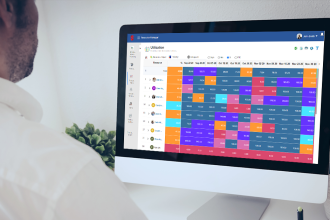Key Takeaways
- Why Personal Liability Coverage Matters for Homeowners
- Everyday Situations That Lead to Liability Claims
- Key Components of Personal Liability Coverage
- How Much Coverage Is Enough?
- Steps to Take if You Face a Liability Claim
- Preventive Tips for Reducing Your Liability Risk
- Frequently Asked Questions About Home Liability
- Staying Prepared: Resources and Next Steps
- Personal liability coverage is a safety net for homeowners facing accidental injuries or property damage claims.
- Everyday occurrences, like a guest tripping or a dog biting a neighbor, can result in unexpected lawsuits.
- Knowing what liability coverage includes, what it excludes, and suitable coverage limits can help secure your financial well-being.
- Taking small preventative measures can curtail significant liabilities in the long run.
- When claims arise, calm and quick action goes a long way in resolving issues efficiently and protecting assets.
- Trustworthy information sources and regular reviews of your policy keep you informed and proactive.
Why Personal Liability Coverage Matters for Homeowners
For most homeowners, personal liability is not at the top of their minds until something goes wrong. Whether it’s an icy sidewalk in winter or an uneven brick in the garden path, accidents can happen in the blink of an eye. When someone else is injured or experiences property damage on your property, you may be considered responsible in the eyes of the law, and claims or lawsuits could follow. That’s where personal liability coverage plays a pivotal role. It helps cover legal fees, medical costs, and awarded damages, so a simple mishap doesn’t translate into devastating financial consequences.
Imagine a child next door cuts across your yard and tumbles over a loose stone, fracturing an arm. Even if you acted with reasonable care and didn’t directly cause the incident, you could find yourself settling medical costs or facing time-consuming legal battles. Likewise, a strong wind could snap a branch from a tree on your property, crashing onto a neighbor’s car. These kinds of scenarios play out in neighborhoods across the country every season. Instead of facing these situations alone, personal liability coverage gives homeowners peace of mind that they have a partner to navigate legal and financial challenges should the unexpected occur.
Everyday Situations That Lead to Liability Claims
Life’s little accidents happen all too easily. Many incidents that lead to liability claims share similar themes: simple, everyday activities creating unintended hazards. Slip and fall accidents remain one of the leading causes. Guests might trip over a curled welcome mat or slip on pooled water by the front door during a rainy day. Any visitor—including delivery drivers and friends—could be hurt, and their medical bills might be your responsibility.
- Slip and Fall Accidents: Unshoveled snow, loose rugs, and poorly lit staircases create hazards. According to injury prevention agencies, over a million Americans visit emergency rooms every year due to slip and fall injuries, highlighting the frequency and risk factors of these injuries.
- Pet-Related Incidents: Even a well-behaved dog may bite when startled or scared, and most policies consider such incidents regardless of whether they occur on your property or in the neighborhood park.
- Falling Objects: Something as innocent as a fallen tree branch, a piece of siding, or debris from a home project can result in property damage or bodily injury to others, with you as the potentially liable party.
Hosting a backyard barbecue or a kid’s birthday party can carry risks. If someone twists an ankle on a loose paver, the financial consequences can mount quickly without the proper coverage.
Key Components of Personal Liability Coverage
Personal liability coverage is commonly bundled into homeowners insurance policies, though details may vary by carrier and region. Here’s what is typically included:
- Bodily Injury: This policy compensates for medical bills and related expenses when someone not living with you is injured on your property—think guests, service workers, or passersby.
- Property Damage: If your actions, or those of a dependent in your household, cause damage to someone else’s property, personal liability coverage can help pay for repairs or replacement.
- Legal Expenses: In the event of a lawsuit, coverage often extends to court fees, attorney costs, and settlements, protecting your family’s savings and assets from severe impact.
Yet, most policies come with essential exclusions. Intentional acts that cause harm, injuries to home residents, and damages related to your professional or business activities typically aren’t covered. If you run a business out of your home or repeatedly host large gatherings, be aware of these exclusions and consider additional protection if needed.
How Much Coverage Is Enough?
Determining the right level of liability coverage can be a tricky process, and many homeowners inadvertently take the risk of being underinsured. Factors such as the value of your home, total assets, lifestyle, and level of risk in your neighborhood all play a part in your decision.
- Do you own other real estate, have large savings accounts, or valuable personal property? Assets beyond your primary home could be at stake if a major lawsuit occurs.
- Are there frequent visitors, children, or pets in your home who could inadvertently cause harm?
- Is your property near public spaces or commonly used walkways that might increase risk?
Many standard policies begin at $100,000 in personal liability coverage. Still, recent guidance from the insurance industry suggests that limits of $300,000 or more are prudent for the average homeowner, with higher amounts advised for those with considerable assets or elevated personal risk. Reviewing and updating your policy limits regularly ensures your safety net evolves as your circumstances change.
Steps to Take if You Face a Liability Claim
If an incident happens, the first few steps are critical in protecting your legal interests and peace of mind. Start by notifying your insurance provider as soon as possible, supplying detailed information about what occurred, including the date, location, and those involved. The more thorough your notes and photos, the smoother your claim will proceed. Always avoid making statements accepting blame, as something innocuous said in the heat of the moment can be used against you later.
- Notify Your Insurance: Give your provider all event details, including documentation and potential witnesses.
- Document Carefully: Take photos of the scene, including any visible injuries and property damage, if present.
- Avoid Admitting Fault: Let the investigation run its course; liability is often more complex than it appears at first glance.
- Cooperate with Investigations: Answer insurer questions thoroughly and promptly, providing any additional records they request.
To better understand each stage, this thorough guide to insurance claims processes offers practical advice on navigating insurance claims, minimizing delays, and ensuring fair treatment. Most policies include payouts and cover legal representation on your behalf, easing the burden as you work through a stressful time.
Preventive Tips for Reducing Your Liability Risk
- Walk your property with a critical eye each season, looking for trip hazards, uneven pavement, or overgrown shrubbery.
- Install sturdy stair railings, repair loose boards, and quickly address areas prone to water pooling or ice accumulation.
- Keep pets leashed or in secure areas when guests are present, and consider obedience training for dogs prone to nervousness or aggression.
- Check trees annually for weak limbs, especially those near sidewalks, neighboring homes, or cars.
- Post clear signs if there are temporary hazards, such as wet floors or construction projects.
These relatively small investments in home upkeep and safety significantly decrease risk. A well-lit entryway or freshly repaired steps can easily prevent an accident or a lawsuit, highlighting the value of routine maintenance and awareness.
Frequently Asked Questions About Home Liability
Does personal liability coverage protect my family who lives with me?
Most standard policies are designed to protect against claims from non-residents or visitors only. Injuries to household members typically fall under your own healthcare, not liability coverage.
If my pet injures someone off my property, am I still covered?
Many providers cover incidents involving your pet outside your home, like a park or visiting a friend’s house. However, some may have breed restrictions or exclusions, so reading your policy is key.
What’s not covered by liability insurance?
Intentional acts, damages from business or side gig activities, and car accidents—covered by separate auto policies—are generally excluded. Always check for policy-specific rules, especially if you own unique pets or run small businesses from home.
Staying Prepared: Resources and Next Steps
The best defense is a good offense: evaluate your home’s physical safety and coverage limits annually—update policies to reflect any changes in your assets or living situation. Stay informed by following reputable insurance updates and reviewing reliable guides. If you ever feel uncertain, don’t hesitate to contact a licensed insurance expert to discuss your concerns and options.
Homeownership brings great rewards—and just as many responsibilities. With the right personal liability coverage, a careful approach to home maintenance, and an informed outlook, you can enjoy your property with confidence, knowing you’re protected from life’s many surprises.













